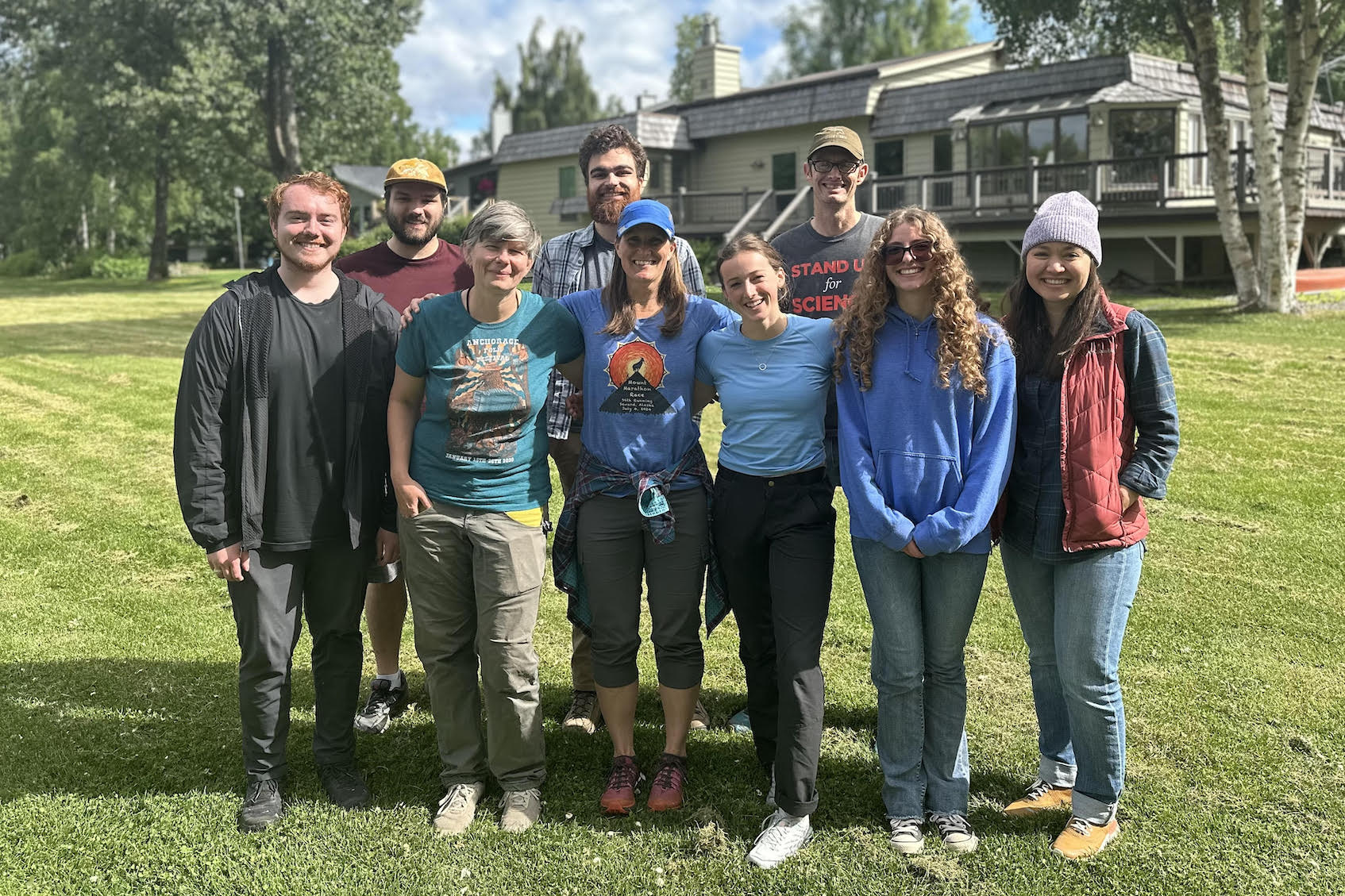Advancing equity for Alaska’s energy future

Intern Greta Laesch (center, first row) with the Anchorage office ACEP team.
October 3, 2024
ACEP summer intern Greta Laesch worked on two Beneficial and Equitable Electrification, or BEE, projects under the mentorship of Michelle Wilber. While the projects differed in scope and focus, they shared the primary goal of advancing equity for Alaska’s energy future.
Laesch is a senior at Williams College in Massachusetts, studying statistics and computer science with a particular interest in environmental and social data science. An outdoor enthusiast and collegiate Nordic skier, Laesch had always wanted to work in Alaska. Her experience living in a rural area of Washington state motivated her to join the BEE team as an intern this summer.
For one project, Laesch worked as a research partner for the Alaska Rural Electric Vehicle Supply Equipment Deployment, or ARED, program in collaboration with the Alaska Energy Authority and funded by the Department of Energy. This ongoing project aims to reduce barriers to electric vehicle, or EV, adoption in Alaska communities across all energy regions.
Laesch contributed to the ARED project by collecting, cataloging and analyzing relevant socioeconomic and geospatial data. Additionally, Laesch completed an analysis of utilization patterns and user sentiment about all high-traffic public charging stations in Alaska to inform future electric vehicle supply equipment, or EVSE, expansion efforts. She also developed and piloted a user intercept survey instrument to be deployed in coming years. This survey is designed to collect information from users to evaluate how these stations contribute to transportation equity in rural areas.
Alaska is in a unique position in the EV revolution. The fact that only 0.2% of the area of the state is populated and that settlements are often sparse and disconnected from the road system presents both challenges and opportunities. This past winter, the state average retail price of unleaded gasoline was $6.61. This is $3.62 higher than the prevailing national average. Given these high costs and ongoing environmental concerns, ACEP is particularly focused on advancing transportation equity in rural and underserved communities that are interested in adopting EV technologies.
The ARED project will progress over the next two years with nine new public chargers to be installed in selected communities. The work Laesch has done this summer will be used throughout the project’s tenure to address equity concerns related to EVSE deployment.
For her project, Laesch steered a household utility valuation study as part of the development of a “demand choice” control system. A demand choice system — a term created by Wilber — is a system that uses residents’ needs and settings, while taking in consideration outside information, to prioritize individual energy uses within a building. This allows residents, instead of the utility, to make choices about their energy use to lower the cost and to best use of renewable energy.
This project operates under the scope of the Equitable, Affordable & Resilient Nationwide Energy System Transition, or EARNEST consortium, a Stanford University-led, DOE-funded effort to achieve equity in energy reliability and grid resilience for all communities nationwide.
Working with community partners, Laesch piloted a study designed to quantify the value residents place on the availability and level of services provided by electricity within the home. The data gathered will serve as parameters in an algorithm for a demand choice control system that prioritizes the use of renewable energy by shifting household energy loads to better match the renewable supply curve. The aim of the project is to reduce the cost of energy for rural Alaskans while also reducing climate emissions and ensuring grid resilience.
Working closely with research and community partners such as the AEA, National Renewable Energy Laboratory, Kotzebue Electric Association and the Native Village of Kotzebue was meaningful to Laesch.
“These projects are valuable only when they are co-created with those who will be directly impacted and I am grateful for the opportunity to learn from those with lived experience in rural Alaska,” she said.
The curiosity and passion that is exhibited by those at ACEP was also inspiring to Laesch, and she hopes to continue to work towards energy equity and sustainable community development in the future.
This internship is funded by DOE through two projects, ARED and EARNEST, through the ACEP Undergraduate Summer Internship program. View the final presentation for this project on ACEP’s YouTube Channel. For more information on this project, please contact Michelle Wilber at mmwilber@alaska.edu.


